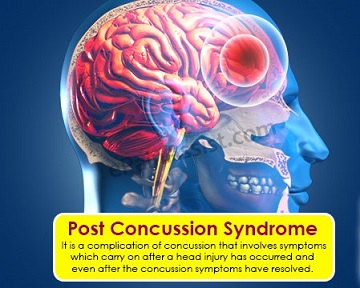Paul Kariya of the Anaheim Mighty Ducks announced that he is unable to attend the 1998 Winter Olympics in Nagano due to a concussion received prior to the Olympic games (Kariya’s fourth concussion). He was still complaining of symptoms related to the non-penalized crosscheck received from Gary Suter of the Chicago Blackhawks during a game. After 10 days of rest, Kariya attempted some light skating, but complained of increased headaches and had to leave the ice after only 15 minutes. The doctors unfortunately were unable to give Kariya the clearance to fly and play in Nagano.
 Nick Kypreos ex-Toronto Maple Leaf and Brett Lindros ex-New York Islander are two more big names who suffer from a relatively unknown disorder called post-concussion syndrome. It was not until recently that people started to take notice of problems evolving from a head injury or concussion. Lindros was forced to retire from playing due to complications following several concussions. He was quoted as saying to the coach during games that he did not “remember the shift (before last)”, or that he was “unable to dial a telephone”. These are simple tasks that most of us can take for granted.
Nick Kypreos ex-Toronto Maple Leaf and Brett Lindros ex-New York Islander are two more big names who suffer from a relatively unknown disorder called post-concussion syndrome. It was not until recently that people started to take notice of problems evolving from a head injury or concussion. Lindros was forced to retire from playing due to complications following several concussions. He was quoted as saying to the coach during games that he did not “remember the shift (before last)”, or that he was “unable to dial a telephone”. These are simple tasks that most of us can take for granted.
A concussion occurs when there is a blow to the head, either from a movable object (puck, stick, etc.) or with an immovable object (boards). The athlete may or may not have lost consciousness due to the contact. Just because the athlete does not lose consciousness, does not mean they do not have a concussion. When an athlete comes off the ice and states that they had their "bell rung”, this may indicate to the coach or therapist that a mild concussion has occurred.
The symptoms of a concussion will usually consist of the following: headaches, dizziness, nausea, ringing in the ears, loss of memory and possible eye problems (blurry vision). These symptoms may last from minutes to several hours. When they last longer than a day, post-concussion syndrome begins.
Dr. Kant from the St.Francis Medical Centre in Pittsburgh, Pennsylvania, has done some in-depth research on Post-Concussion syndrome. He states most symptoms of the post-concussion syndrome will usually last anywhere from a few weeks to three months. Some patients may experience symptoms lasting up to six months (50%), and some (10-20%) may even continue to have symptoms for up to two years.
Dr. Kant lists the following as common Post-Concussion syndrome symptoms:
1. Physical - headaches, dizziness, sleep disturbances, blurring vision, light and sound
sensitivity, neck pain, ringing in the ears and fatigue.
2. Emotional - anxiety, irritability, depression and mood swings
3. Cognitive - short term memory (S.T.M.) problems, impaired concentration and
attention span, periods of confusion and cognitive slowing (learning problems).
The physical and emotional attributes are quite self-explanatory. The cognitive symptoms may, however, need some explanation. Long term memory will usually remain intact after mild to moderate concussions. However, S.T.M. will be prominent in forgetting such things as telephone numbers, faces, names and daily tasks, as experienced by Brett Lindros. Athletes may often get confused in over-stimulating areas such as malls, arenas or grocery stores. They may also complain of difficulty in learning new tasks or material. Dr. Kant’s research has found that treatment of the emotional symptoms such as depression, anxiety, and insomnia may improve the athlete's cognitive status.
Treatment: Generally, a "wait and see" approach should be employed for the first few weeks following the injury, except for conservative symptoms such as pain and insomnia. Those athletes who continue to notice symptoms related to the physical, emotional and cognitive symptoms for longer than four weeks should be referred for a comprehensive neurological evaluation. The prognosis for athletes with no past concussions, no disabilities and a good family support have been shown to have a favourable outcome with post-concussion syndrome. There has also been some success with craniosacral therapy (small movements of the skull bones) or osteopathy in helping to decrease these symptoms. Personally, after an accident where a line drive hit me in the face in baseball, and osteopath was able to decrease my headache symptoms quickly and return my facial bones to their normal alignment.
Conclusion: Over 2 million people a year in North America will suffer from a concussion of some magnitude. The treatment of these concussions needs to be addressed more in the future to help with these individuals suffering from these long lasting symptoms. The main treatment in my viewpoint is prevention. At Canadian Sports Therapy our motto is "Prevention is the key to Success". This not only relates to all injuries, but especially concussions. We recommend that your helmet is definitely CSA approved and is replaced every year. The foam loses its density over a long season; therefore, the helmet loses its absorption value, which is the main protectant from concussions. Also, if there are any cracks or problems with the outer shell, it should be replaced immediately.

